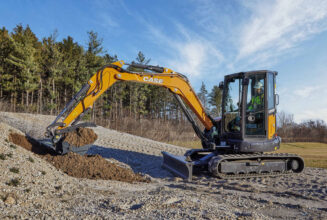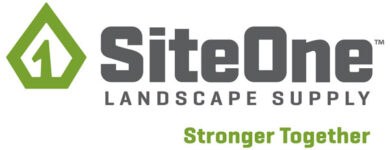325 Years Later, Husqvarna in Tune with the Marketplace
By Alan Shaw, Husqvarna
Husqvarna shares its birth year with… Johann Sebastian Bach.
One of the world’s greatest composers remains a powerful force in classical music because of the quality of his work — which consists of over 1,000 elegant pieces of music — from concertos and cantatas to sonatas and orchestral suites.
Like the Baroque works of the adored German musician, appreciated as much for his technical command as his artistry, Husqvarna too has endured for 325 years. But while Bach’s compositions — of course — have not changed in that time, Husqvarna’s output has evolved dramatically over 3-1/4 centuries.
Today, Husqvarna is the world’s largest producer of outdoor power equipment. When our company started, on the banks of the Swedish river that gave us our name, “power equipment” did not exist. The company was founded to manufacturer much-needed musket barrels for the army of King Charles XI as they prepared to ward off a threat from Denmark.
In the years and decades and centuries that followed, Husqvarna has evolved both subtly and dramatically, keenly in tune with consumer demands, competitive opportunities and economic realities. Reading the list of products that the company has manufactured and marketed could take nearly as long as Bach’s Mass in B minor.
Swords. Sewing machines. Wood-burning stoves. Motorcycles. Household products — from spittoons to cherry stone removers and herring fryers. At one time, the company had such a strong presence within the household that famed artist Ewert Karlsson said that “Husqvarna” was the first word he learned — since it was stamped onto the iron stove in his mother’s kitchen, on the frame of his first bicycle, and on the housing of the family sewing machine.
A history of Husqvarna mirrors the history of Europe and, ultimately, the world. As technology has evolved, Husqvarna has been there, priding ourselves in our inventiveness, innovative capacity and technical proficiency. Glancing through a book about Husqvarna produced in 1989 to commemorate our 300th anniversary yields fascinating facts and photos, like those of Husqvarna motorcycles shown racing to victory on the world’s fastest courses.
Like those long-ago motorbikes, today’s Husqvarna products rest comfortably — when not in use — in garages and backyard storage sheds throughout the U.S. and the world. While the engineers and machinists who earned widespread acclaim on earlier products are long gone, they established a legacy that today’s workforce holds dear — a commitment to high quality, proficiency, value and safety that has earned Husqvarna strong sales and a well earned reputation for leadership.
Our mission statement as a 21st century company is quite specific: We provide innovative quality products and solutions to make garden, park and forest care, as well as construction easier for professionals and consumers around the world.
But I feel certain that elements of that mission — especially the references to innovation, quality and a commitment to making life easier for customers — have been important to the hundreds of thousands of Husqvarna employees who came before us.
Today’s Husqvarna zero-turn mowers, professional chain saws, drill systems and dozens of other product lines may not bear a literal resemblance to the muskets and kitchen equipment of our past. But the precision of our products and the passion of our 14,000-plus employees in over 40 countries have remained consistent all these years. Perhaps what has been passed down is the “Gnosjo spirit,” which our early workers were said to have — a blending of industriousness, inventiveness and resolve.
Often, as the head of Husqvarna’s North American operations, I am asked what has made our company so successful in the highly-competitive outdoor power equipment marketplace. That is a simple question, and — despite the complexities of the modern marketplace — demands a simple answer. .
Perhaps I should borrow a line from one of my Husqvarna forbearers, who wrote the following 25 years ago: “Thanks to our very capable, well trained personnel, our good products and our excellent reputation, we are well equipped to meet new challenges.”
So true, 325 years into our history.
Alan Shaw is Head of Americas for Husqvarna, Charlotte, N.C.
Timeline
- 1689: Rifle factory
When Swedish weapons production took off in the late 17th century, hydropower was needed to handle certain mechanical operations. The drillingwork at the waterfalls in Huskvarna, southern Sweden, was our first plant. - 1872: Breaking new ground
A very innovative and ambitious period, resulting in a broad array of new products: sewing machines (1872), hunting weapons (1877), wood stoves (1884), mincing machines (1890), and the first Swedish typewriter (1895). - 1896: Bicycles
The era of bicycles begins — and lasts through 1962. - 1903: The motorcycle era begins
Husqvarna earns a worldwide reputation, as its lightweight-yet-powerful engines helped make some of the most successful track racing and motocross bikes in history. - 1919: The first lawnmower
Husqvarna acquires ‘Norrahammars Bruk’, the first step in the Group’s current focus on outdoor power products. The first motorized Husqvarna lawnmower for commercial use is launched in 1947, and in 1959 the first homeowner model reaches the market. - 1959: The first chain saw
Expertise in engines from the production of motorcycles is now utilized in new product areas, as Husqvarna introduces its first chain saw — which used motorcycle muffler technology to achieve lower noise levels than its competitors. - 1969: Setting new standards for ergonomics
When the Husqvarna 180 chain saw is released, it features a groundbreaking anti-vibration function that prevents “white fingers disease,” a common problem for forestry workers around the world.
In 1973, Husqvarna introduces the world’s first chainsaw with an automatic chain brake. In 1999, the feature TrioBrake is introduced, enabling users to activate the chain break with the right hand — further reducing the risk of injury for forestry workers. - 1978-79: Outdoor power products expand
The outdoor operation continues to expand both through organic growth and through acquisitions. Power products now include chain saws, motorcycles, lawn mowers and power cutting machines. - 1980s: Strengthened positions in the U.S.
Organic growth and acquisitions expand Husqvarna’s operations in lawn and garden. Two major acquisitions, Poulan/Weed Eater and Roper Corp, complement Husqvarna’s product range, making the U.S. the largest market for garden equipment. - 1995: The birth of the robotic mower
Husqvarna pioneered the market by launching the world’s first solar-powered fully robotic lawn mower. In 2013, a third generation model with built-in GPS is introduced. - 2002: Power cutters and diamond tools
When Diamant Boart International was acquired in 2002, the construction business doubled in size, turning into a world leader within its segment. - 2007-2008: Expansion
Husqvarna expands in watering by acquiring the Gardena brand, followed by Zeonoah (which enables expansion in Japan). Production in China is expanded through the acquisition of Jenn Feng and the construction of a new plant for chainsaws and other handheld products. - 2009: Husqvarna demolition robot
Husqvarna’s first remote-controlled demolition robot is launched, designed for all demolition tasks and for where it is too dangerous for workers to enter. - 2012: Battery products
Husqvarna introduces a range of battery products for consumers and professional. - Sidebar provided by Husqvarna.
Husqvarna: Looking Ahead
What does the future hold for Husqvarna?
A clue can be found from our 325-year past. Husqvarna has prospered, evolved and grown due to our commitment to engineering excellence, a strong entrepreneurial spirit and a passion for developing innovative, high-quality solutions.
That begins with staying close to customers, whose input, insights and changing needs have fed our steady stream of new products and enhancements that not only promote ease of use but showcase our focus on sustainability.
In 2014, we have unveiled a number of ground-breaking solutions that address our customers’ demands for high-quality solutions. A few of the latest Husqvarna technological breakthroughs include:
- AutoTune, a technological and environmental advancement in professional chain saws that minimizes exhaust emissions and optimizes engine performance; it eliminates the need for carburetor adjustments.
- X-Torq, a technology that delivers lower fuel consumption and reduced exhaust emission levels in accordance with the most stringent environmental regulations ; it is used predominantly in handheld products.
- Additions to our growing line of battery-powered products; these lightweight products are quiet and free from direct emissions.
- Continued enhancements to our line of self-operating robotic mowers, which save time and effort for homeowners and facility managers; they produce no direct emissions during use and consumer very little energy.
- Additions to our line of industry leading all-wheel drive mowers, designed for uneven terrain and tough mowing conditions.
Looking ahead, Husqvarna will focus on continuing to grow our independent dealer sales and retail channel, while also focusing on high-growth geographic markets, especially in Latin America.
And with housing starts and existing home sales on the rise once again, Husqvarna will continue to leverage our leadership position as the world’s largest provider of outdoor power equipment.
Here’s to the next 325 years!


